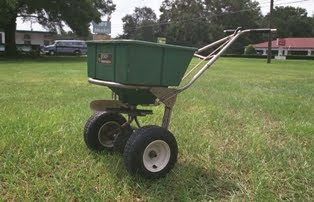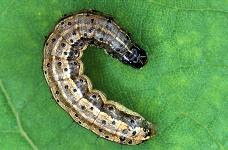 Do you have questions about the Best Managment Practices (BMP) state law that was just passed?
Do you have questions about the Best Managment Practices (BMP) state law that was just passed?
The University of Florida has a Frequently Asked Questions (FAQ) section to help answer your questions. Please see this link for the FAQs: http://fyn.ifas.ufl.edu/pdf/00-SB494_and_SB2080_FAQ_8-6-09.pdf
Pinellas County Extension is offering several of the BMP certification classes here. The class costs only $15. Please go to this link to register: http://pinellas.obsres.com/botanical/Info.aspx?EventID=%203001
Friday, August 28, 2009
BMP Frequently Asked Questions
Friday, August 7, 2009
Lawn Caterpillars
By Jane Morse, University of Florida/IFAS Extension Agent, Pinellas County
The Caterpillars
The tropical sod webworm is the most common caterpillar that attacks home lawns. These  are stealth caterpillars because they hide during the day by curling up on the soil surface and come out at night to chew the grass.
are stealth caterpillars because they hide during the day by curling up on the soil surface and come out at night to chew the grass.
The caterpillar or larvae are gray-green in color and have many brown spots. Full grown caterpillars are ¾ to 1 inch long. There are generally 3 to 4 generations each year and the life cycle is 5 to 6 weeks long.
The fall armyworm can be found year round in  coastal areas. These will feed day and night, but are most active during dawn and dusk. They are usually more of a problem at golf courses because they prefer to eat Bermuda grass. They are greenish at first, but turn dark brown with a light stripe on their back and a dark stripe on each side. They can get to be 1 ½ inches in length.
coastal areas. These will feed day and night, but are most active during dawn and dusk. They are usually more of a problem at golf courses because they prefer to eat Bermuda grass. They are greenish at first, but turn dark brown with a light stripe on their back and a dark stripe on each side. They can get to be 1 ½ inches in length.
The striped grass looper may be cream, blue-gray, brown. black, or orange in color. They also have a light stripe along the middle of their back. These are not as common as the tropical sod webworm or the fall armyworm.
orange in color. They also have a light stripe along the middle of their back. These are not as common as the tropical sod webworm or the fall armyworm.
The Damage
Initially the damage will be seen as small bites taken out of the sides of the grass blades so that the grass blade looks notched. Just as with any caterpillar, the larger they grow the more they eat. If the damage is not seen early, then it may seem that overnight the lawn has been scalped. Therefore, it is important to examine your grass at least once a week.
To find the caterpillars part the grass and look for chewed leaves, silken webs, green or brown frass (excrement pellets) or the actual caterpillar. A soap flush (2 Tablespoons liquid dishwashing soap mixed in 2 gallons of water) can also be used to find caterpillars. Pour the soap flush on 1 square yard of damaged grass and after 5 minutes look to see if any caterpillars have come to the surface. If you find 5-8 sod webworm caterpillars, or 3-4 fall armyworms or striped grass loopers per square foot then chemical treatment is recommended (see below).
Preventing Them
The first step in managing these caterpillars is prevention. There are 3 things you can do to have a healthy lawn.
First, use a slow-release, complete fertilizer and apply it no more than 2 times per year. The frequent use of water-soluble (quick-release) nitrogen fertilizers leads to tender new growth which is very attractive to pests. Tropical sod webworm female moths search out dark green turf for egg laying...a condition created by the overuse of nitrogen fertilizers.
Secondly, water only when the grass shows signs of wilt…do not overwater. When watering, apply about ¾ inch of water. Too much water and fertilizer creates thatch (dead material between green grass and soil) which makes pest control very difficult.
Lastly, mow turf at the recommended height (varies with grass type, but most home lawn grass should be mowed at 3 ½ to 4 inches). Mow often enough so that no more than 1/3 of the leaf height is removed. Keep the mower blades sharp for a clean cut.
Insects that Help Control Caterpillars
There are several helpful predators (killers) such as spiders and ground beetles that will eat caterpillars in your lawn. In addition, the striped earwig is a good predator of tropical sod webworm. There are wasps that are common parasites (killers) of the tropical sod webworm and fall armyworm, and there are parasitic flies that attack the striped grass looper caterpillar. These beneficial insects can often be seen flying over lawns in search of the caterpillars.
Chemical Control (Last Resort)
The safest product to use is the bacterium Bacillus thuringiensis (Bt) because it only kills caterpillars. It is most effective to use when the caterpillars are small (young). Some commercial products include Dipel, Green Light Bt, Worm Killer, Safer Caterpillar Killer and Thuricide. Caterpillars treated with Bt stop feeding within a day or so and die within a week. Treatments applied in the early evening when caterpillars begin feeding may be most effective.
Once caterpillars are nearly fully grown they may pupate (change from a caterpillar into a pupa) quickly making an insecticide treatment unnecessary or ineffective.
There are many insecticides labeled for use on these caterpillars. For a complete list call the Pinellas County Extension Service at 727-582-2110, visit us at 12520 Ulmerton Road, Largo, FL or see the University of Florida/IFAS publication “Lawn Caterpillars” at http://edis.ifas.ufl.edu/IN608. For more information about mowing, watering or fertilizing your lawn contact or visit your local University of Florida/County Extension Service.
References:
Turfgrass Insect Sheets http://edis.ifas.ufl.edu/IN025 .
Lawn Caterpillars http://edis.ifas.ufl.edu/IN608
